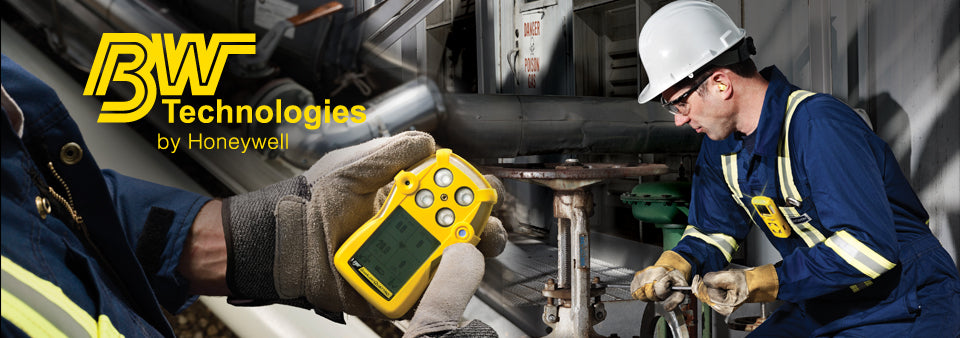Introduction
In hazardous industries, effective gas detection is crucial for ensuring worker safety and maintaining operational integrity. Fixed and portable gas detectors serve distinct purposes in monitoring toxic and flammable gases. Choosing between portable vs. fixed gas detectors depends on several factors this article delves into the functionalities of both types, their similarities, and their differences, helping you choose the right solution for your needs.
Fixed vs. Portable Gas Detectors: Similarities
Common Functions and Capabilities
Both fixed and portable gas detectors are designed to monitor the concentration of target gases in various environments. Portable gas detectors are primarily used in field operations where gas levels can fluctuate unpredictably, while fixed gas detectors are installed in permanent workspaces that require continuous, round-the-clock monitoring.
Sensor Technology
Both types of detectors utilize electrochemical sensors that trigger a chemical reaction when exposed to the target gas. This reaction is then converted into an electrical signal displayed on the LED panel. The detectors display gas concentrations as a percentage of the total air supply, with hazardous gases measured in parts per million (PPM). Alarms are activated when gas concentrations exceed the permissible exposure limit (PEL) or lower explosive limit (LEL), or when oxygen levels are insufficient.
Single-Gas and Multi-Gas Detection
Both portable and fixed gas detectors can be configured to detect either a single type of gas or multiple gases. Single gas monitors focus on one specific gas, while multi gas monitors can detect four or more gases simultaneously. Multi-gas monitors typically contain separate sensors for each target gas, with common configurations including sensors for carbon monoxide, hydrogen sulfide, combustibles, and oxygen.
Maintenance and Calibration
Regular maintenance is crucial for both fixed and portable gas detectors. Each detector requires a bump test at the beginning of every shift, which involves exposing the sensor to a gas cylinder with a known concentration of the target gas. This process ensures the detector is functioning correctly. If the readings do not match the known values, the device needs to be recalibrated.
Calibration is essential for maintaining accuracy, especially for older devices, as sensors can degrade over time. Any device that has been dropped or damaged should also be recalibrated. It is recommended to calibrate gas detectors at least every six months. Always refer to the manufacturer’s guidelines and the owner’s manual for specific calibration instructions.
Fixed vs. Portable Gas Detectors: Differences
Portable Gas Detectors
Portable gas detectors are designed to be worn, so workers can keep their hands free. They usually only weigh a few ounces.. Each has a clip that quickly attaches to a collar, lapel, or bag of the user. The device should be worn in the breathing zone or within 10 inches of the person’s nose and mouth. This ensures that the sensor is exposed to the same air the person is breathing; otherwise, the results may be inaccurate. Some gases sink or rise depending on how much they weigh compared to the surrounding/ambient air.
When gas levels exceed the permissible threshold, the alarm vibrates, flashes, and makes an audible noise to alert workers in loud spaces or those with poor visibility.
All portable gas detectors run on batteries that usually last up to 24 hours. The device lists the battery charging time and how long it will last when it’s on or in standby mode.
Companies can store their portable gas detectors in a docking station in between shifts. The station automatically recharges the battery, performs a bump test, and recalibrates the sensor when necessary while documenting the results.
Fixed Gas Detectors
Fixed gas detectors are installed permanently in a variety of work environments and confined spaces where hazardous gases can gather. They are designed for continuous gas monitoring and typically must be plugged into a power source. The monitor should be installed at the proper height depending on whether the gases rise or sink to the ground. Most gas detectors are mounted on the wall’s ceiling or ground to keep them out of the way and ensure they do not obstruct the working space.
The detector has a limited range. Companies must install a fixed gas monitor every 30 to 40 feet in large, enclosed settings to monitor the air in the space.
Fixed gas detectors may have a wireless option and can connect with smart devices in real time. Each device reports to a central control panel or software program that automatically records the readings for compliance purposes. If one monitor detects a high gas concentration, the other monitors in the area will activate their alarms to ensure workers evacuate safely.
The latest technology makes it easy for managers to monitor dozens of devices and work zones at the same time. Using the interface, they can file incident reports, contact specific workers, and identify individuals who may be at risk of exposure based on their proximity to the affected monitor.
How to Choose Between Fixed vs. Portable Gas Detectors
Both monitors have specific uses in various industries. Workers in confined spaces typically utilize portable gas detectors to avoid potential exposure. First responders, utility crews, and maintenance professionals generally use portable gas detectors when working in the field. This helps them stay prepared and flexible when visiting various locations on the job.
Companies with hazardous gases present in warehouses and facilities should install fixed gas detectors in these enclosed spaces where these gases can gather, including oil and gas plants, agricultural facilities, pipelines, and manufacturing plants. Choosing the right gas monitor helps save lives.
Conclusion
Both fixed and portable gas detectors play crucial roles in hazardous industries by monitoring toxic and flammable gases. Understanding their similarities and differences helps in choosing the right equipment to ensure worker safety, regulatory compliance, and operational efficiency.
Contact our team of experts today to help you determine whether a portable or fixed gas detector best suits your specific job conditions, ensuring you receive the precise level of protection you need.

